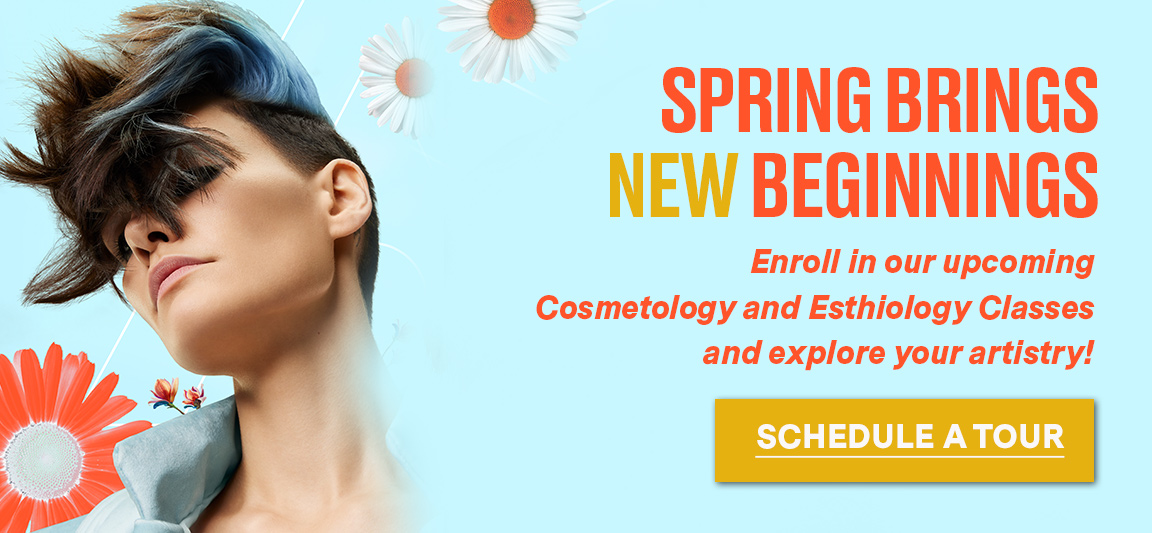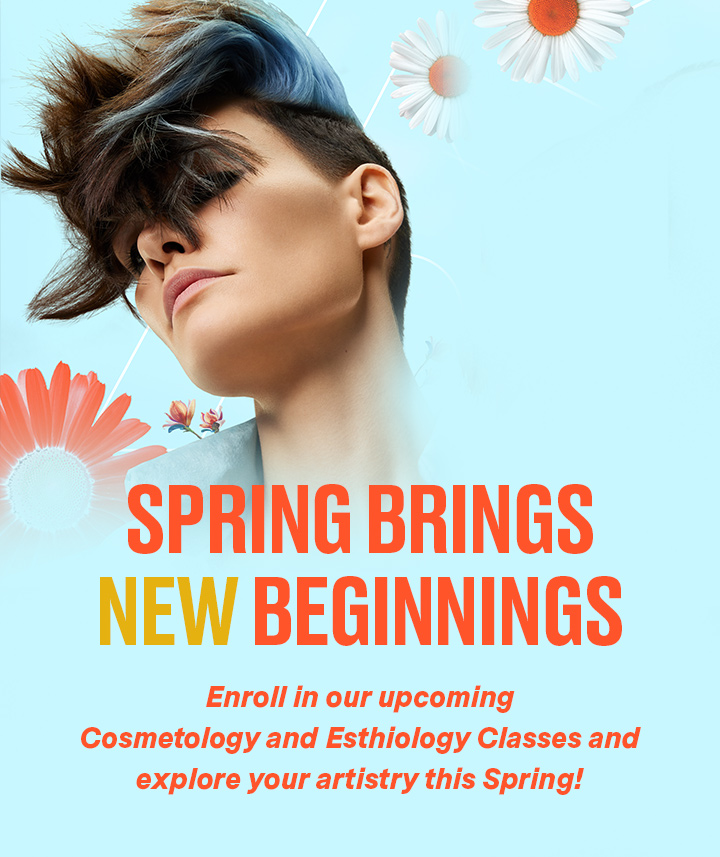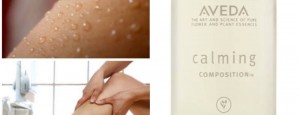Meet Renée Gadar – one of the biggest catalysts in the movement to influence state cosmetology boards to require testing and training in all hair textures.
Gadar, a math teacher-turned-hairstylist-turned Global Artistic Director for Texture at Aveda, spearheaded the creation of the Aveda Institutes’ comprehensive texture curriculum, which the schools introduced in 2020.
Gadar told American Salon how she came to play such a significant role in cosmetology education in the U.S:
When I started doing hair, I was 9. I grew up in North Miami in the Black and brown community. I didn’t really understand hair in any other framework.
I moved to New York to be a math teacher in the South Bronx. I had moved to Harlem. So again, my world was very Black and brown.
But I wanted to get back to doing hair. When I was looking to see what school I could attend to make that switch, I found (celebrity stylist) Nick Arrojo’s cosmetology school.
Now, ARROJO Academy is a boutique cosmetology school. When I was there, I did not get texture education.
Of course I challenged my educators, but they circumvented my questioning. I didn’t have the knowledge to push back. I didn’t realize the problem was pervasive, as opposed to it being a unique experience in one boutique school.
I then proceeded to work for Nick. His salon was geared toward the white consumer. And whenever I would ask why they didn’t have Black clients, I was told, that’s just not who walks in here, or that’s not who we get a lot of.
His salon was on the ground floor in Soho, so there was a lot of foot traffic. Women of color were passing by, and they would see me in the window, and would come in and request me.
That’s how I pieced it all together. We weren’t getting a lot of Black clients because we didn’t speak to them — not because they weren’t there.
When I brought that up, they would say, “Hair is just hair.” And I’d say: if hair was just hair, everybody would be in here. But they’re not. If hair was just hair, your master stylist wouldn’t be asking me for advice.
There’s different hair. And I started to realize that more and more in bigger ways.
Black women spend 80 percent more in beauty than any other demographic in the United States. If you know you have a demographic spending that much more — and you still ignore them? It’s really interesting and deliberate and it feels, to me, malicious.
After six years, Gadar turned in her resignation. That’s when her former colleague, stylist and platform artist Tatum Neill, got in touch. He asked her to join his family business, Neill Corp., an Aveda distributor and parent company of Aveda Arts & Sciences Institutes.
Tatum wanted me to come on as an educator, because he respected my haircutting. The first place they could find to put me was in the schools.
The person who ran the schools at the time said, we don’t need a haircutting educator. We need a texture educator. Because when we poll our graduating students, they say that’s what’s lacking the most.
I think Neill Corp. had 15 Aveda Institutes at the time and I was jumping around from school to school. I would travel every other week and spend two days in a school teaching texture. I quickly learned that wasn’t enough.
Every time I went to a school, the Black students would be sitting in the back, just not invested in their program. Some of them would come up to me after class and say, this is the first time I feel seen.
I was teaching in the schools on this every-other-week schedule for two years. That whole time, I fought for the students to have texture mannequins in their kit. And in that time, they were like, well, no, we can’t make that happen.
By 2019, Aveda Corporate had caught wind of me and recruited me to build curriculum for them.
I was making a formal presentation about texture education in Minneapolis, which is Aveda’s headquarters. And Edwin was there (Neill Corp. owner Edwin Neill). When I was done, Edwin said, We need to act now.
I told him, the first thing you can do is put a texture mannequin in every single kit.
He asked, is that all you need? And I said, I’ve been fighting for this for two years!
Edwin made one phone call and it happened right away. The Neills bought Pivot Point out of all their texture mannequins at once. And it got in their kits right away.
And man, what a difference it made.
About two months after that, I was walking in New York and spotted a cosmetology student through a window. She was holding a texture mannequin, and before I even saw the Aveda logo, I knew she was an Aveda student. I was so proud of that.
I called Edwin and I told him that. How that representation in the kit mattered so much. And that because he did this one thing, it already had changed the whole experience for the students.
And he asked, how do we do more of this? How do we get more done?
One of the things Edwin told me was, I want this inclusive effort to be my legacy.
Edwin’s a really big player in the beauty industry. And Aveda is a really big player. I knew that the work the industry needed the most, I could do more efficiently through Edwin because we were aligned.
Gadar’s work in the Neill Corp.-owned Aveda Arts & Sciences Institutes caught the attention of Aveda’s education executives, who asked her to collaborate with other Aveda texture artists and expand the training. In 2020, Aveda incorporated its comprehensive texture curriculum into all Aveda Institutes.
The global brand at the time noted that “about 65% of the U.S. population has wavy, curly or coily hair, yet little formal training exists on how to cut, style, color and care for natural hair textures and curl patterns.”
I used to be a 7th- and 8th-grade math teacher. So building curriculum is what I learned how to do.
When I came on with Neill and was touring the schools, I was given their existing texture education. I was grateful for what it was, but it was missing a lot because it wasn’t from a teacher’s lens.
And so I altered that education and made it more full. It quickly surpassed the two days at a time I was coming into the schools.
As I was doing this, Aveda Global found me. And then pulled me into a room with Black women who are a part of the Aveda network in some way — Tracy Freeman, Naomi Dove, Monica Stevens.
And there we were. We worked in the back end of 2019 building this curriculum.
It included a texture style class, a texture cut class, and a texture color class.
Once we made that, Aveda Global wanted me to put that curriculum into salons first. I kept saying how strongly I felt that it needed to be in the schools first.
When we were in those talks, before anything was decided, the pandemic hit.
So we couldn’t put it in salons. It was the perfect opportunity for it to be in the schools. I knew the schools were trying to figure it out, because hours needed to be met. They needed an online solution.
We took those 3 foundational classes and broke them up into 13 different modules so the students could get this foundational learning before they even come to a salon.
Obviously at that time the world shut down, but George Floyd was also murdered. And you know, white guilt springs high in times like that. So everybody was really anxious to move and make moves.
So yeah, they’re learning now. But it’s not a perfect science. Because what happens is that the educators in the school don’t feel proficient at it. So sometimes they don’t teach it as proficiently as they could, right? But it’s at least in the school building now.
Aveda was the first one to do this. Now, other schools will say that they had it, but they only ever had texture education if a Black teacher was a part of the staff. Some schools did have texture education, but not via the material — usually via a Black educator. They would bring their knowledge into the school as opposed to there being curriculum that supported their knowledge.
The schools generally had maybe a chapter on textured hair, but it was never how to style textured hair in its natural state. The education was always on relaxing it.
So now at Aveda, whether they have Black educators or not, this is part of the curriculum. You have 13 modules. You have your mannequin. You’re supposed to be learning texture throughout your whole program.
Once we got that done, I told Edwin, You really want to move the dial in the industry? The next step is to change the laws.
That means the (state cosmetology) test needs to change. Because there’s nothing in the test for texture.
That means no matter what school you go to in that state, you have to learn texture.
We only had jurisdiction over Aveda and our schools. But we could, by changing the test, impact all schools and make sure that they’re teaching texture in all schools. And Edwin said, Absolutely.
He was on the (Louisiana) state cosmetology board. So he made changes. We would go back and forth on what the board was willing to change and what they weren’t.
Spurred by Neill’s influence on the state Board of Cosmetology, Louisiana in 2021 became the first U.S. state to require that all its licensed cosmetologists have training and testing in textured hair.
I’m not exactly completely happy with the changes that have been made — but I’m grateful that now texture is a part of the test.
Right now, it’s not comprehensive. But I’m hoping that once a state has it for a while and they start getting complaints about it not being comprehensive, they’ll be pushed to do more.
Because, you know, the the first step to knowing that you have a problem is to admit it and to make a small change. And that opens up the door for more change.
So that’s what I’m hoping for. I’m just hoping for more steamrolling because as more and more schools and states do it, by competition alone, the standard will go up. The schools will start saying, we offer this.
Paul Mitchell is now doing a better job. I know the last time I went to ARROJO to pick up some tools, a student ran up to me and said, Guess what? We’re learning texture now. I don’t know what the scope of it is at Paul Mitchell and I don’t know what it is at ARROJO, but it seems like they have texture education now.
I talk a lot. And I’m in a position of having people listen. People within the beauty industry, people who can make moves.
So the longer I’m in the field, I can connect all the dots and see why we have the gaps we have. I just keep talking to people within my own title at Aveda.
I’m working with Research & Development to develop products. I’m working with Marketing to say: what do we communicate about this product to the Black consumer?
You have to talk to many different people, because when something has been left out for a long time, it becomes a circle. The cosmetology schools feed the salons; the salons feed Fashion Week, you know what I’m saying?
All these gaps exist in all of these different places, so the best way to heal it is to talk to all of the people that have different parts that hold the pieces.
It’s a huge ecosystem, and I think my part in it is to be a consistent voice.
I will say the same thing to Edwin as I say to the people in Education at Aveda — which is the department that I’m in — as I say to R&D, as I say to Marketing. I do a lot of fighting. I risk my job every day.
I don’t think it should feel like a risk, but it does — because people don’t like change. Often times people feel threatened by sharing the spotlight they’ve always had, or don’t like giving up some of the privileges and advantages they’ve always had.
And I’ve always said that Black and brown lives are not a political issue. It’s a human issue, and if we’re all human, you need to care for us equally. And that hasn’t been happening. And so you have to stop and reckon with yourself.
You have to reckon with your contribution to the beauty industry — however long you’ve been in it — and to take onus for contributing to that lack. And then once you move past that, we can all work together to make it not a lack anymore.
I am not a political person. I believe in all power to the people, right? My effort is empowering people to demand things wherever they see it need demanded.
Encouraged by success in Louisiana, Edwin Neill became a founding member of the Texture Education Collective, an industry alliance that works with individual states to require training and testing in textured hair. Since then, three more states have joined the movement.
(The Texture Education Collective) are politically minded people. They’ve come to me and gotten a bunch of information, gotten my thoughts on what I believe they should be pushing for. And they take that information, and go and do those talks. Any time they get some feedback where they don’t really know what to say — they come back to me. They talk to me about it. And then they go back out.
I don’t like to lobby, myself, because that’s when you have to compromise. That also means you’re the nice guy and you have to shake hands and make people happy. I’m not feeling that.
I’m interested in change and challenging the status quo. I believe that my voice needs to be uncompromising.
Edwin told me, Renée, you are changing the industry we’re in. You’re changing it. But I don’t feel that way, because I feel in the trenches most of the time.
Every once in a while, when Edwin pulls me into a talk, or I have to make a presentation or something like that, I’m able to stand over my work and see the changes that it’s made. But outside of that, I’m usually in the trenches.
So a part of my work too is being dissatisfied with a little change. Some people make celebrations over that, but because we’re so late in this, I want all of the change, right now.
And sometimes it feels like I’m worrying all the time.
But I think what helps me hold on is, if I walk into a cosmetology school, usually a Black student, a Black woman, will run up to me crying, just feeling seen and feeling inspired.
The first time I taught in a cosmetology school and the Black students were sitting in the back, by the time I was finished, they were crying.
When I made my presentation at Aveda Congress in September, Black women came up to me, crying.
And I get it now. I get my purpose.
The industry is predominantly white and what I mean by that — it’s not the people who are doing the hair. The people who make decisions are predominantly white, and so are lawmakers, the people who hold the power. They’re usually white males.
The executives of all these big beauty brands are usually white men and women, and they make decisions in this industry concerning Black and brown people. The overall goal is that those rooms don’t look as white as they once did historically.
Black people need to be in those rooms to make sure we’re not excluded from the story.
I think that once upon a time, we were deliberately excluded from that story. And then it just became the status quo, and it wasn’t deliberate anymore. But the result is still the same, right?
And I think this moment of awakening is helping people to see the misses. I will spend the rest of my career challenging people to see the misses.
Source: https://www.americansalon.com/education/woman-who-put-texture-mannequins-beauty-schools




